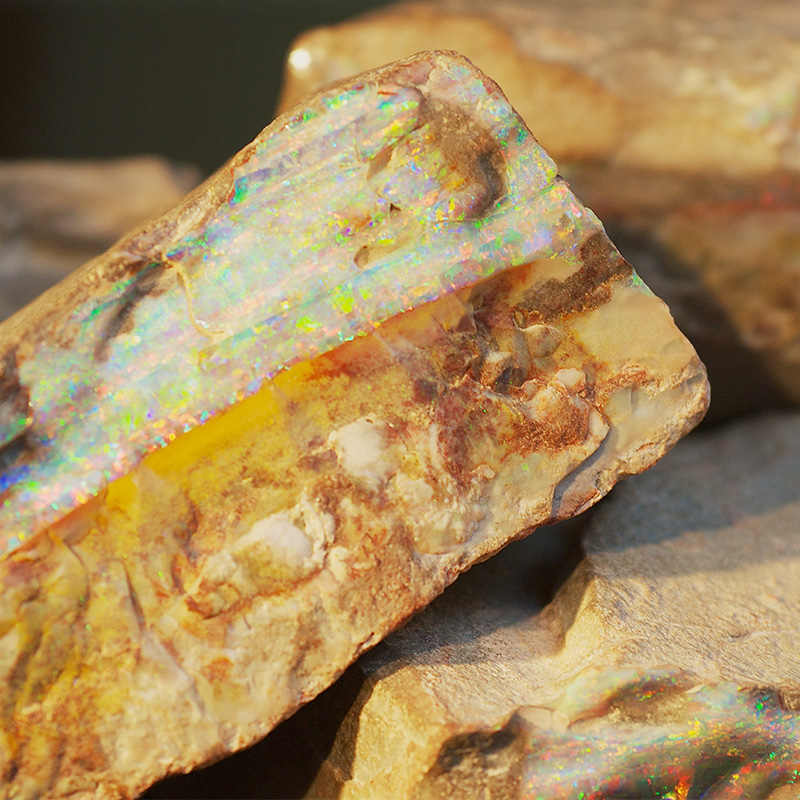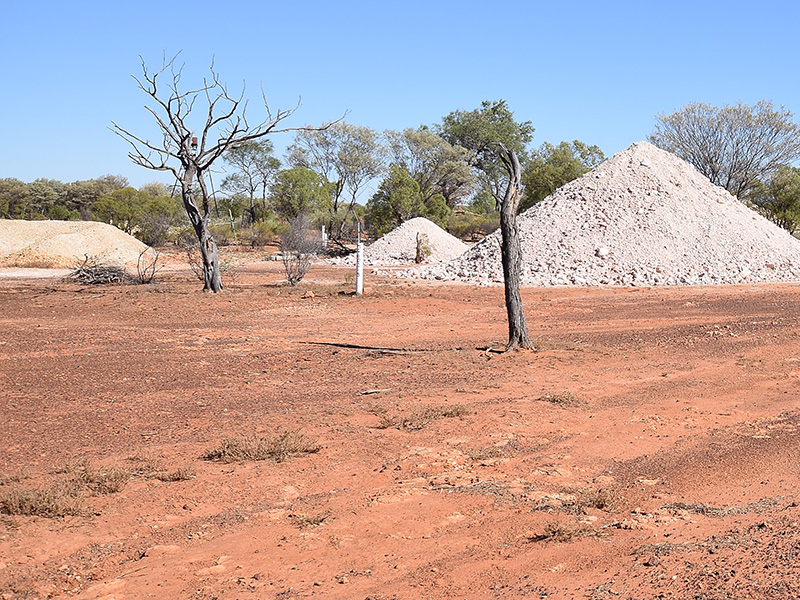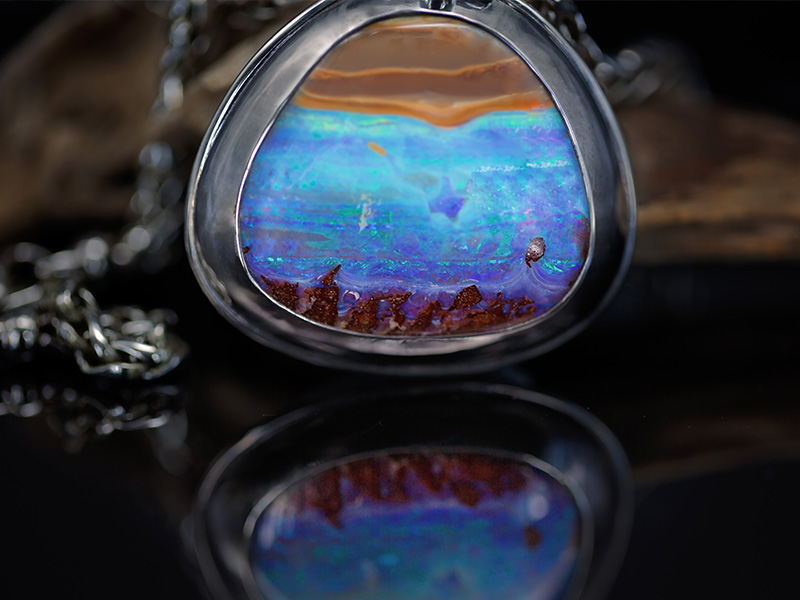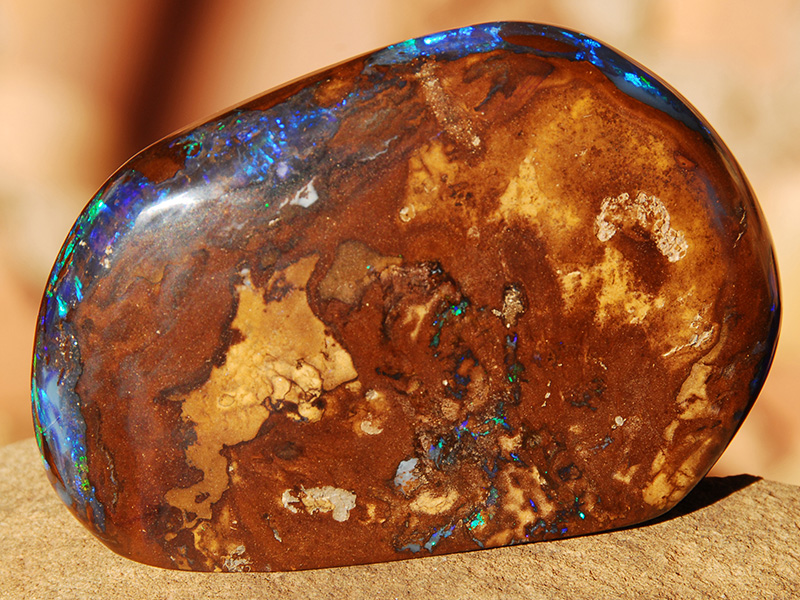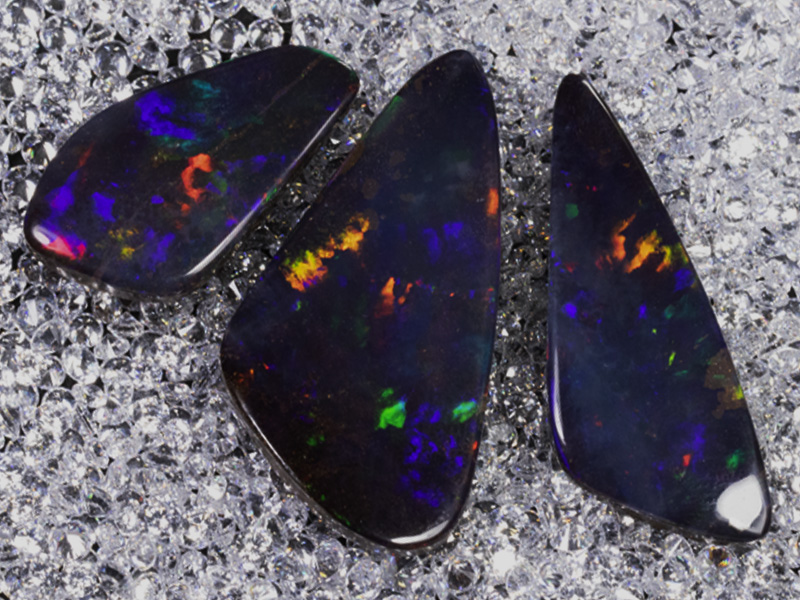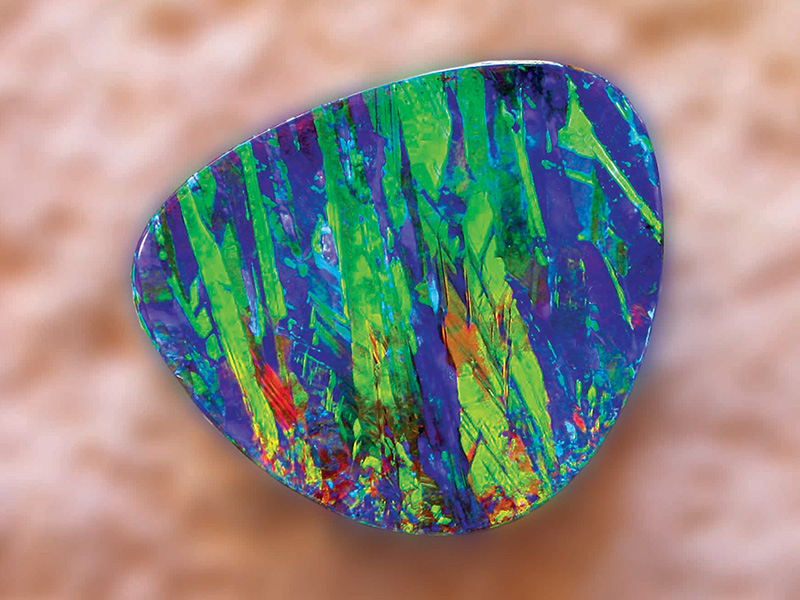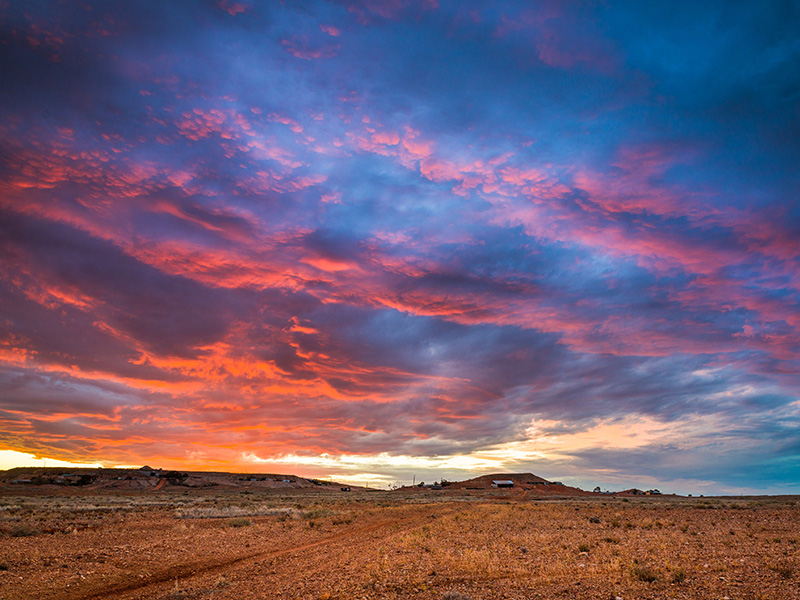Queensland Boulder Opal – Early History
As far as can be ascertained the history of Queensland Boulder Opal dates back to 1872. It is one of heartbreak, frustrations, determination and, of course, success at times against incredible odds. Rich in legends and myth, it is the birthplace of our present industry.
Many discoveries were made during the 1870’s but it wasn’t until 1889 when Tully Wollaston successfully marketed the gem that the industry became established.
Initial Interest
Though a number of names are mentioned there is no record of Australia’s first opal miner. Berkelman and Lambert had a mine on the Barcoo in 1872, whose opal eventually attracted great interest at the Queensland annexe of the London international gem exhibition early in 1873. Another was Mr O’Brien who in 1872 discovered gem-quality volcanic opal at Springsure in the Carnarvon Range.
Queensland Boulder Opal History – The First Sales
Queensland Boulder Opal History – The First Sales
It was not known if Mr O’Brien worked his mine, but history records that a lease was later taken out by Mr F. Batho who is reputed to have sold beautiful gems from there on two occasions in London between 1879 and 1884, one supposedly selling for one hundred and fifty pounds.
Opal was also reported in 1872 on Listol Downs, a large cattle station to the north of Adavale. Though it has been claimed by some as the first production mines in Australia it was never developed. Having prospected the area as a youngster during the 1950’s, I found no trace of the old mines.
The real development of Queensland’s vast deposits began the following year in 1873 with the discovery of fine quality opal north of Thargomindah.
These fields were to eventually extend 800 kins to Kynuna and produce opal of a quality never before seen by the world.
By the year 1875, there had been many wonderful finds throughout South Western Queensland especially in the Kyabra Hills. During those early years, production was fragmented as there was no ready market for the gem; a situation which was not to change for many years. This was borne out when joe Bridle, probably the most remembered of all early miners, took a parcel of fine opal down to Silverton in New South Wales as late as 1887, where he displayed it in the offices of F. E. Harris.
The first serious attempt to establish the fledgling industry was in 1875 when Mr Herbert Bond took up leases over the Aladdin, Scotsman and Cunnavalla mines in the Kyabra Hills. Opal from these mines enabled him in 1879 to float a company in London for two thousand five hundred pounds.
A troubled beginning
Mr Bond’s efforts, gallant as they were, eventually failed setting the industry back many years. Yet they were not unnoticed by Queen Victoria, an ardent opal lover, who awarded him a 40 acre freehold lease over the Aladdin Mine.
It was not until 1888 that Tully Wollaston, a young surveyor turned entrepreneur, from Adelaide made the next determined effort to market the gem. In so doing he engraved his name forever across the annals of Australian history. It was due to his tireless struggle and sheer determination in convincing the gem merchants of the world to accept our opal, that we now have a viable industry.
Meeting the miners
Wollaston gave a description of Joe Bridle, the man whose opal played a major part in setting the foundation of our present industry. “Extremely friendly, somewhat middle height, square set and as strong as a horse, square jawed, and executive nose, with kindly blue eyes”.
Bridle, though apparently friendly, still treated Wollaston and his party with some scepticism, for after breakfast the following morning he emptied the contents of an old battered tin across his rough bush table and to everyone’s amazement out tumbled a heap of pale barred sandshot opal. Noticing the look of disappointment on Wollaston’s face he quickly apologized explaining that these were only his seconds.
Wollaston’s first purchase
It wasn’t until the following morning that Bridle showed him his ‘firsts’. They justified the reason behind all those gruelling 1100 km’s of intense heat and mental strain, as they sparkled and danced in the sunlight with every colour known to man.
For some reason Bridle was reluctant to sell his opal to Wollaston at this stage. Spending the next few weeks showing him and his friends around the Kyabra Hills.
It was a fortnight after arriving at Bridle’s camp that Wollaston made his first purchase. Because of its place in history, I will quote Wollaston’s description of the event. “Next day explored ‘The Southern Gem’ and ‘Friday Gully’ and pegged the former. Had lunch at Donald Gordon’s camp, the only other party in the hills at the time, and here I blossomed out into the merchant and made my first purchase of opal!! Sixty one pieces of Breakfast Creek stone from Charlie Whitehead for twenty seven pounds and ten shillings. It was small stuff, but very brilliant and the dancing lights pricked my hands in a delicious way”.
Finding a Buyer
Wollaston returned to Adelaide via Brisbane, leaving Buttfield and the aboriginal boy to look after their affairs on the field. It was during this period that Buttfield perished whilst searching for their camels.
Back in Adelaide, Wollaston was able to spend a few days with his family before departing for London on the S.S. Sydney, arriving in July 1889. Like those before him, he had no success with the conservative English. Who had come to accept only the milky types of Hungarian opal.
He eventually found a firm ‘Hasluck Brothers’ in Hatton Gardens, willing to give the new gem a chance. They set up cutters and distributed the opal throughout America.
Wollaston returned to Australia and the Kyabra fields to purchase opal for the new market. One morning Joe Bridle came hurrying into camp on his horse with news of a rich strike about 45 miles back behind Euronghella Station. Bill Johnson had discovered it and named it; “The Little Wonder”. On arriving at the mine they were disappointed to find that the adjoining ground had been pegged by a silent Scotsman known locally as Carney Jimmy.
The rest of the story, I feel, should be told by Wollaston himself. “Ah then, shall I ever forget it Old Bill, after interminable delays, as they seemed to me, tooling off to, spring his plant. William Johnson had his ‘firsts’ rolled up in an ancient nut brown singlet, stuffed inside a blue dungaree trouser leg, which was tied at each end with wallaby sinew.
A Beautiful display of Opal
That was not, I imagine, strictly as regards ‘firsts’ but was more distinctive. Unlike a mere sugar bag in which held ‘seconds and thirds’. As we squatted on our haunches my heart was pounding off my ribs. I wondered if the other two could hear it. Bill’s stubby fingers didn’t tremble as he fumbled with the sinew. Nor as he extracted the nut brown garment from its blue pupa case and tumbled the sacred balls of fire into a glowing pool. I felt a odd stiffness as I could not reach one of them. My lips were dry and cracked. Sixty pieces of pure red grain opal as large as Walnuts were in his ‘firsts’, ‘seconds’ and ‘thirds’. Though clothed in a sugar bag, were by no means poor relations.
‘The Little Wonder’
All the opal I had ever seen paled in significance beside this “Little Wonder Stone”. Such that I became absurdly incapable while making a bargain. If old Bill had demanded a life pension, a villa on Lake Como, the Elgin Marbles, or any of these as a condition of sale, I would have closed instantly. When he merely said, “one thousand quid”. In a nervous but half defiant tone, I couldn’t for the life of me suggest breaking that deliciously ‘cool’ figure. Metaphorically, I leaned my forehead against its coolness and steadied myself sufficiently to write a legible cheque”. (1000 quid is $2000).
Many have believed that Joe Bridle was the original discoverer of ‘The Little Wonder’. Although Bridle purchased the mine on behalf of the ‘South Western Queensland Opal Company’. After Johnson had taken 14,000 pounds from it ($28,000).
For more in information about Queensland Boulder Opal and it’s history see our books section in the store.
“A journey of colour” A History of Queensland Opal 1869-1979 ( Now sold out)
